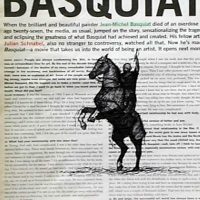In the Herman Gallery HA relates the exhibition as a whole (also) to a kind of breading out. The portrait drawings are made onto found magazine pages. Pages of art magazines, fashion magazines and daily newspapers, where text and image in some ways is connected to the horse portraits. The drawings are giving new meaning to the medium of newspaper/magazine and its subjects and at the same time they are experimenting with the interpretation of horsearchery in a contemporary cultural context. This way the simple pen drawings are playing with text and image, time and space.
Beata Veszely
